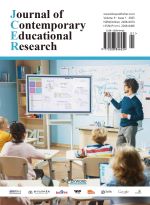Teaching Design for the Elementary Chinese Comprehensive Course “My Family” Based on Multimodal Theory
Abstract
With the rapid development of Teaching Chinese as a Foreign Language (TCFL), improving teaching quality requires integrating advanced pedagogical concepts. Multimodal teaching, which employs various symbolic modes to engage students’ multiple senses, is a highly effective approach. Introducing multimodal theory into TCFL education can enhance teaching efficiency and improve students’ communication skills. This paper applies multimodal theory to TCFL, using the elementary Chinese comprehensive course “My Family” as a case study to propose a detailed teaching design, followed by evaluation and reflection. The aim of this teaching design is to deepen the understanding of multimodal theory and provide additional reference for the TCFL.
References
Cao X, 2022, The Application of the Cyclical Teaching Method in the Multimodal Primary Chinese Integrated Course, dissertation, China University of Petroleum (Beijing), 9.
Zhang D, 2009, The Application of Multimodal Discourse Theory and Media Technology in Foreign Language Teaching. Foreign Language Teaching, 30(04): 15–20.
Ma Y, 2022, A Study on the Application of the Multimodal Teaching Model in Intermediate Chinese Oral Teaching, dissertation, Lanzhou University, 3.
Zhu Y, 2007, Theoretical Basis and Research Methods of Multimodal Discourse Analysis. Foreign Language Research, (05): 82–86.
Li Z, 2003, A Socio-Semiotic Analysis of Multimodal Discourse. Foreign Language Research, (5): 12–15.
Zhang D, 2009, Exploration of a Comprehensive Theoretical Framework for Multimodal Discourse Analysis. Chinese as a Foreign Language, 6(01): 24–30.
Chen L, 2023, A Study on the Application of the Multimodal Teaching Model in the Online Primary Chinese Integrated Course for International Students, dissertation, Jilin International Studies University, 8.
Yin X, 2018, A Survey on the Use of the Primary School Textbook “Experience Chinese” (Thailand Edition) in Ayutthaya, dissertation, Hunan Normal University.
Cui W, 2012, A Study on the Implementation Strategies of Teachers in the Multimodal Teaching Environment. Data of Culture and Education, (20): 154–155.

